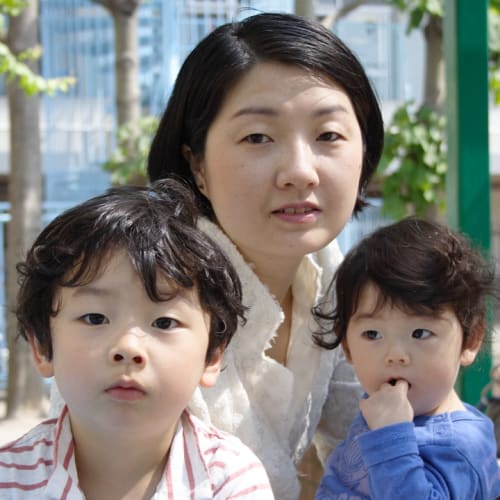Ai Yamaguchi initially trained in textile design, was inspired to paint on various textiles that have since developed into narrative paintings.
Borrowing references from the traditional ukiyoe, which gained its popularity in the late 17th century Edo-period in Japan, she contemporizes her figures of young girls onto super smooth surfaces that are made voluminous by adding padding under the canvas. Without sharp corners or defined edges, they liberate us to the free association and boundless imagination beyond the canvas. The works show no perspective or shadow reflecting Japan’s post war obsession with manga cartoons, an important subculture among young Japanese. However, Yamaguchi’s figures differ from popular manga works and are far more personal. Her created postures come from her own posing and are highly expressive scenes of her self-observation of her own body. The existence of the characters in her works transcends eras. The depiction of these half-naked women are subtly erotic in an almost innocent way, carrying a naive hollow gaze, as if they are absorbed with their own dreams and emotions. The patterns on the kimono that they wear, in contrast to the relatively simple outline of bodies, are delicately painted that on their own elaborate another story. However tranquil and harmonic the setting appears, these women almost float with unease, reflecting a precarious connection with their surroundings. For the exhibition at 10 Chancery Lane Gallery, Yamaguchi will install her largest multi-canvas work to date inside the gallery's space in SoHo, complemented with large site-specific wall murals. These works, entitled ashita mata, take their reference from calligraphy and are deliberately made into pieces, suggesting a fleeting feeling of a lost unity, the mystery born from imagining the absent surrounding pieces, and the new image and values created by taking each part separately. Each of them can be read as a piece in time, connected with iren, the space between each character in calligraphy which maintains the flow and strengthens the consciousness toward the primordial unity. Also in the exhibition are new prints from the series called yorokobi, which depicts the joy and delights for seasonal changes.
